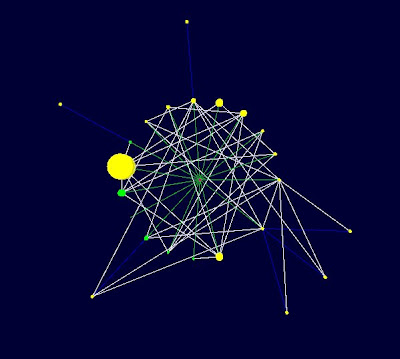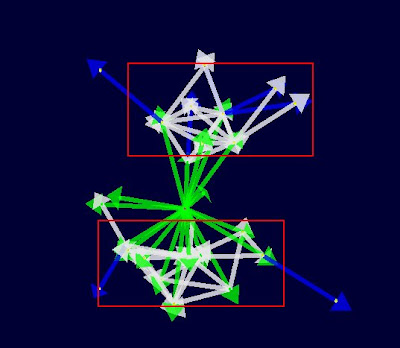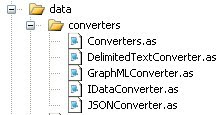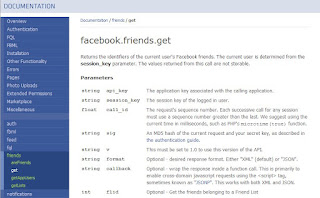A lot of folks are wondering how Twitter will monetize. Will they sell premium services to businesses that want to make Twitter part of a communications strategy? What about Flickr, YouTube, and Facebook? Are the ads working? Regardless, if this is Web 2.0 then why are we still talking about subscriptions and eyeballs on pages?!
I want to suggest another strategy: Sell to government.
I don't mean the general sense. I mean, specifically, Twitter, YouTube, and Facebook and a great many
others should set up for-government operations. I wrote to the Delicious team years ago asking when they were coming out with a solution that I could bring to government, i.e., in-house. I never got an answer. Regardless, figuring out how to get these companies oriented toward government is not straightforward. Most Web 2.0 companies literally could not be further outside The Beltway. I suspect they don't have much in the way of strategy for state, tribal, or local either. Google does a good job selling into government with its enterprise appliance model, and with more than just search. But, of course, Google is a massive company.
Culture has a lot to do with things. The Pentagon is not a T-shirt and flip flops kind of environment. "The Bigs," i.e., large-cap companies that provide most of the contracting labor, are not at all oriented to innovate in the Web 2.0 technology space. You don't see Macs anywhere. You do see MS Office everywhere. I'm not entirely sure what conclusions can be drawn from these observations but I am sure the observations are significant.
I suppose the best example of Web 2.0 penetration into the government space is tele-presence. Adobe Breeze is ubiquitous on Defense Knowledge Online (DKO). Just about anyone with a DKO government account can create or attend a meeting. But tele-presence probably isn't the first thing that comes to people's minds when asked to name a Web 2.0 technology and I'm not sure Adobe is the best example of a Web 2.0 company.
Yes, there is something different about Twitter, Flickr, YouTube, Facebook, Delicious, et al. I happen to think that something different - whatever it is - translates into unrealized opportunity for both buyers and sellers in the government space. I choose to focus on these technologies specifically and there are others that I include. ProgrammableWeb has a solution for the registry problem, for example. I don't represent any of these companies, by the way. I call them out as (mostly) well-known examples of capabilities the government needs. I don't really care if Flickr, Picasa, or PhotoBucket is the image repository of choice. Vimeo and YouTube can and should compete for the video infrastructure.
The point is that government needs platform solutions.
Simple, content-based, platform solutions are the most obvious plays for Web 2.0 in government; images, video, audio. The federal government processes a staggering amount of this stuff. The DoD may be the first to get into the mix with
TroopTube.
There also are plenty of outfits that would use social tagging tools if only they could bring them in house. By bring them in house, what I mean and recommend is providing enterprise services solutions. It's nice to have applications that provide tagging, but applications are seldom the best enterprise solutions and are hardly social (except, perhaps, in MOSS). Tagging is a domain, a Web 2.0 partition, if you will, unto itself. It is a simple-enough-but-not-too-simple utility that scales and it can be integrated with just about any other application, regardless of whether or not the application was designed with tagging in mind. Yes, government needs strategic guidance and support for tagging services and Web 2.0 tagging companies are just the ones to provide it...if we can figure out how.
The current providers, a.k.a. "The Bigs" are not oriented to provide Web 2.0 tech support.
This is either an opportunity to get new business before The Bigs or to create a business of showing them the way. In any case it is an opportunity to make money. More specifically, it is a way for Web 2.0 technologies to make money. In the government services space the biz-speak is generally referred to as "priming" and "subbing," as in: you are either a prime contractor or a subcontractor. I don't see many Web 2.0 companies subcontracting to big, traditional system integrators, though.
The government is not set up to acquire Web 2.0 technologies.
While services contracts are fairly common and understood, things are less well-defined in the products and solutions space unless the products and solutions are ubiquitous or otherwise extremely well known. Government, especially federal, wants to buy everything in bulk. See also: Indefinite Delivery, Indefinite Quantity (
IDIQ). New technology is extraordinarily difficult to insert, especially in secure environments. Protocol, procedure, and process rule the land. Force-fitting into an existing model is too often the preferred method.
We are getting better at defining and avoiding undue process but process, by definition, is: 1) necessary and 2) inherently situational.
When doing business with the federal government, it's important to know how business is done inside The Beltway. There are most probably things in the mix that need to be undone, too. To a meaningful extent the situation is not different at state, tribal, and local levels. Education is needed on both sides of the buyer/seller relationship. We might "change the world" in the process of implementing Web 2.0 for government, but requisite is the obligation to have a fair understanding of "the world" first. The obligation goes both ways but mostly falls on the shoulders of sellers.
Choices for Web 2.0 companies to make money by doing business with government:
- Become or spin-off an enterprise systems integrations unit
- Sell enterprise systems solutions a) to government b) to system integrators (Note: probably can't sell solutions to government without either being an integrator or having the support of one.)
- Consult a) to government b) to system integrators on enterprise systems
Of course, "partner" is an option, but still implies one or more the previously listed options.
[Update 9:47 PM - I've decided I really don't like these choices at all. Need to come up with an altogether new business model, perhaps...probably]
There's so much more to this than I can wrap my head around now, certainly more than I am prepared or qualified to comment here.
[Update 9:47 PM - Forgot to comment on need for and evidence of government investment in backbone instracture and understanding of cloud architecture; significant issues arise once a bunch of these services are running around on a single network. And as always, security is different and harder.]
I think it's time Web 2.0 companies, government, and large-cap contracting companies had a grand introduction to one another. Believe it or not, there are plenty of people who have never even heard of Web 2.0.

























